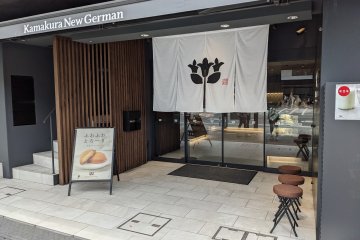
키타가마쿠라 엔카쿠지(円覚寺)
Tomoko Kamishima이 사찰 단지에는 내부로 통하는 긴 길 있다. 선신당들은 보통 그들의 건물을 일렬로 세우는데, 엔고지도 예외는 아니다.

Engakuji is the second most important temple out of Kamakura’s Five Great Zen Temples and was founded by regent Hojo Tokimune in 1282 to commemorate both the Japanese and Mongolian soldiers who lost their lives when Mongolia attempted to invade Japan in 1281 (the Battle of Koan).
In 1923, the Great Kanto Earthquake destroyed many, but not all, of the original buildings. Therefore, some of the structures today are relatively modern reconstructions.
This principal temple is the head branch school of the Rinzai-sect of Zen Buddhism and some areas of the complex are not open to the public. Even so, the historical structures, ubiquitous nature, and educational atmosphere make for a soul-rejuvenating visit. Engakuji’s bell tower and Shariden Hall are designated as national treasures.
For a truly immersive experience, join the temple’s morning zen meditations or enjoy traditional Japanese food and drinks at its tea house, which sells vegetable curry, dumplings, azuki bean sweets, matcha, and amazake (sweet sake).
Engakuji Temple is a 1 minute walk from Kita-Kamakura station.

이 사찰 단지에는 내부로 통하는 긴 길 있다. 선신당들은 보통 그들의 건물을 일렬로 세우는데, 엔고지도 예외는 아니다.

정말 맛있는 야채, 맛있는 스테이크와 디저트, 세련된 분위기와 놀라운 광경을 즐기고 싶다면 "SCAPES"라는 식당은 딱 여러분을 위한 곳이다.

창의적인 프렌치 레스토랑인 Nature et Sens에서 감각적인 경험을 마음껏 즐길 수 있습니다. 제철 식재료와 가마쿠라 농산물은 이 절묘한 요리에서 가장 중요한 위치를 차지합니다. 식사 중에 다양한 와인 컬렉션에서 선택해서 와인과 미식을 즐기세요.

지역 주민들이 사랑하는 가마쿠라의 맛을 만나보세요. 가마쿠라 뉴 저멘의 부드럽고 크림 같은 스폰지 케이크가 감동입니다. 특히 카라멜 커스터드는 관광객들에게 가장 인기가 높다.

아라타마 명물 돈가스를 맛본 후에는 이 신선한 맛에 반하게 될 것입니다. 돈까스 외에도 다양한 선택을 제공합니다. 모짜렐라 치즈 고로케, 크림 고로케 등 아라타마의 다른 요리도 꼭 드셔보세요.

Tokeiji, a Rinzai-sect temple of Zen Buddhism, is a branch temple of nearby Engakuji, which is a short 5-minute walk away. This important temple/nunnery was founded in 1285 by the wife of regent Hojo Tokimune as a sanctuary for women who were abused by their husbands. In a time when women could not legally divorce, Tokeiji offered them a three-year training program in return for an official divorce. The temple’s right to issue divorces was revoked in the early 1870s and its time as a nunnery ended in 1902. Up until 1902, men were strictly forbidden from entering the premises. Today, all visitors are welcome, and the temple is known for its beautiful flower gardens from summertime hydrangeas to wintertime plum blossoms. The relatively small complex features multiple structures, including an entrance gate, a bell tower, tea houses, a treasure house, and a main hall. The treasure house holds Buddhist artifacts, as well as lacquer work from past nuns; and the main hall enshrines a seated statue of Shaka Nyorai, the principal image of the temple. Join the temple for early morning zazen meditation, which is held every Sunday.

Fugenzan Meigetsu-in is a Rinzai Zen temple of the Kenchō-ji school in Kita-Kamakura, Kanagawa, Japan. Famous for its hydrangeas, it's also known as The Temple of Hydrangeas. The main object of worship is goddess Shō Kannon. Wikipedia

Kenchoji is Kamakura’s oldest Zen temple and is recognized as the top temple of the city’s Five Great Zen Temples. It was originally founded by regent Hojo Tokiyori in 1253 as a Zen training temple, and its first head priest was a Chinese Zen priest named Rankei Doryu. One of Kenchoji’s defining characteristics is its expansive temple grounds. After the gates and main area, the complex extends deep into the wooded hills. The temple’s main buildings feature traditional Chinese architecture and are arranged in a line, which is characteristic of Chinese Zen Buddhist temples. Kenchoji’s entrance is marked by Somon, a relatively small, yet beautiful, wooden gate that leads to the main gate, Sanmon. This massive wooden structure is meant to relieve you of all your attachments. Just past Sanmon and to the right is the temple’s bell tower, and to the left is a revered juniper tree. This 13-meter-tall tree is estimated to be about 760 years old and allegedly sprouted from seeds brought from China during the temple’s construction. After the gates, the temple buildings stand in a line down the complex. First is Butsuden (Buddha Hall), which enshrines the principal statue of the temple, Jizo Bodhisattva. Directly behind Butsuden is Hatto, the largest wooden temple building in Eastern Japan. When Kenchoji was strictly a training temple, monks would gather in Hatto to listen to priests’ lectures. Inside Hatto is a statue of Senju Kannon and a stunning ceiling painting of a dragon among the clouds. Past Hatto is Hojo; this building was initially the head priest’s residence, but today is popular for its picturesque Zen garden. Sanmon, the bell tower, Butsuden, and Hatto are all designated as National Important Cultural Properties. After the main temple grounds, a path goes further into the forested hillside to Hansobo. This small shrine is dedicated to Hansobo Daigongen, the guardian deity of the temple, and has a small observation deck. A little further past the shrine is a second observation deck where you can observe Mount Fuji on clear days. From this point, there is a one-hour hiking trail that leads to Zuisenji Temple.